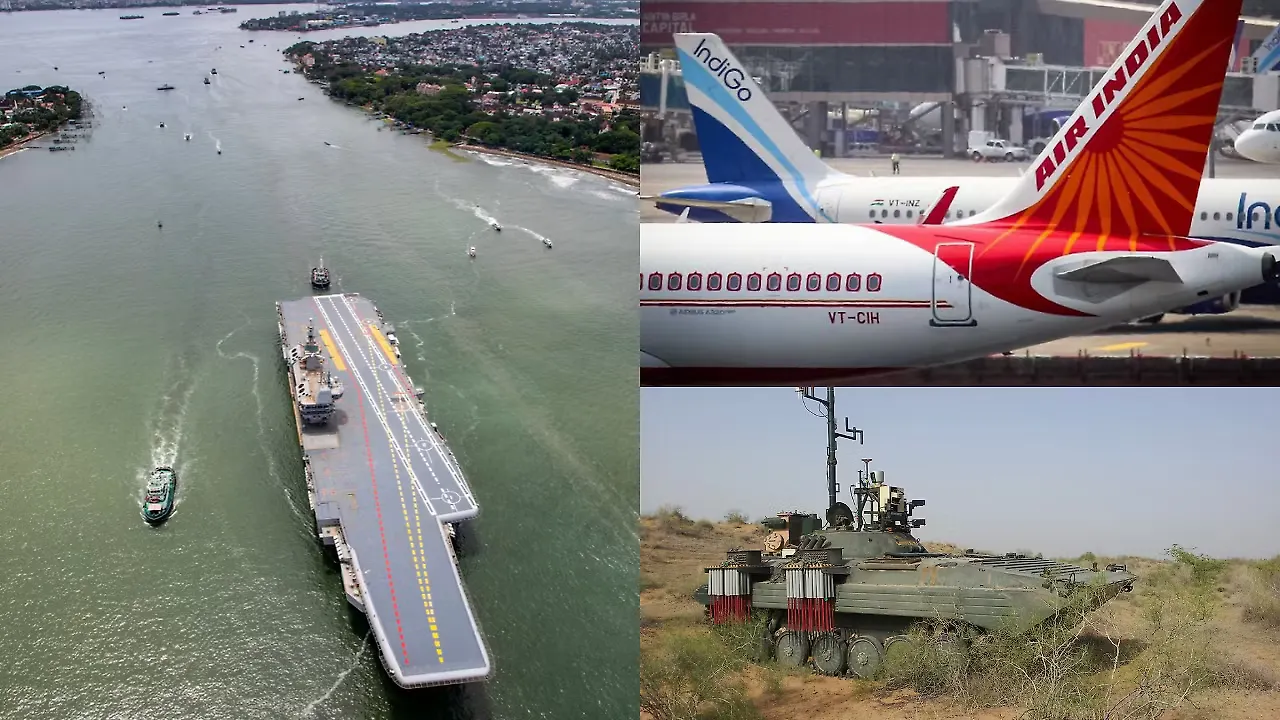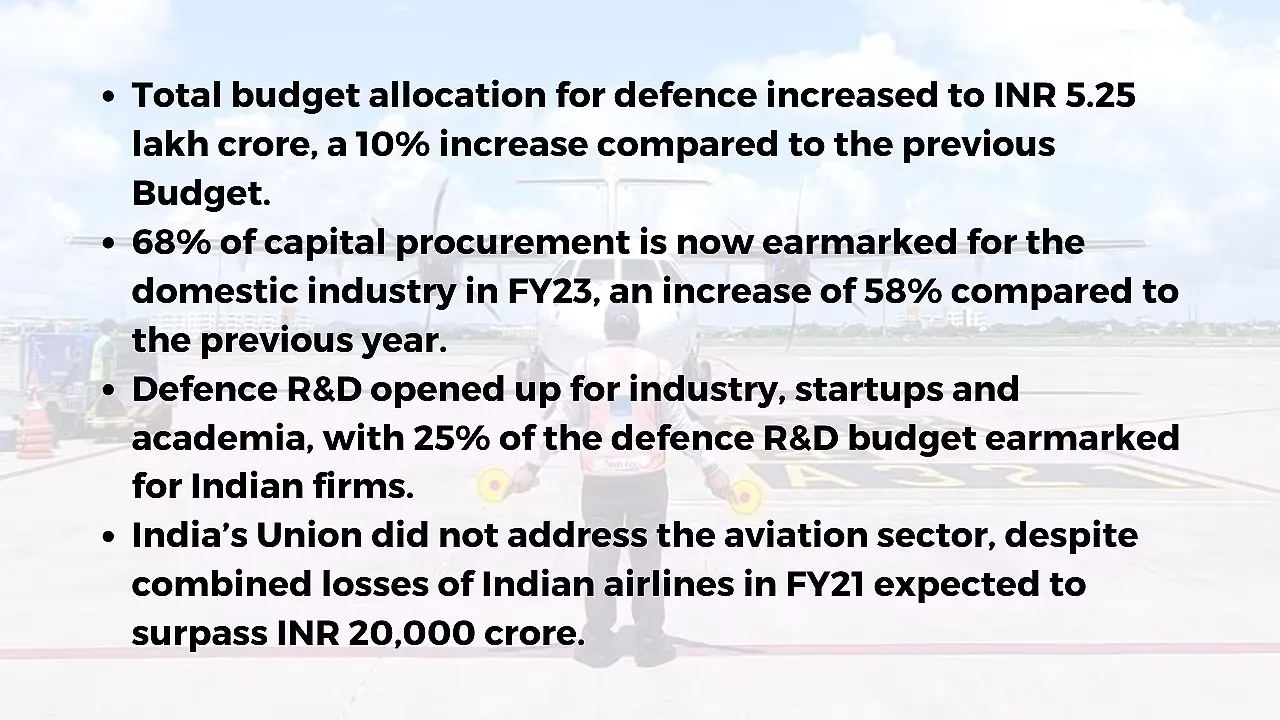
The Union Budget 2022-23 23 presented by Union Minister for Finance & Corporate Affairs, Nirmala Sitharaman, has reiterated the government’s commitment to reduce imports and promote AtmaNirbharta in the defence sector.
The government has made it clear that despite the pressing need for the Indian armed forces to modernise their defence equipment, they will have to search for indigenous solutions to meet their requirements. The capital procurement budget allocation earmarked for the domestic industry in FY23 has increased to 68% instead of 58% for the previous year. The total budget allocation for defence has now increased to INR 5.25 lakh crore, and while it is a healthy increase of nearly 10% as compared to the previous year, India’s challenges on its western and eastern borders will require large budget allocations if the armed forces are to complete their modernisation plans by 2030.
Indigenisation At All Costs
The capital allocation budget at INR 1.52 lakh crore funds the procurement of new defence equipment and payment of equipment already purchased. Nearly 70% of this budget will now be reserved for domestic industry, but a clearer definition of what is considered to be a domestic product is needed. One would assume that a foreign product sourced from a foreign company and manufactured in India should still be considered an imported product as none of the design IP rests in Indian hands. Since India still lacks a strong defence manufacturing base, even products developed indigenously at significant expense, such as the Tejas light fighter, have 50% imported content (engines, weapons, sensors and avionics, to name a few), and this is expected to progressively reduce to only 40% towards the end of the programme. As such, there needs to be a greater focus on the creation of defence IP in India through enabling design and development, rather than manufacturing imported products under as for the former, future upgrades, maintenance, and overall Life Cycle Costs will be cheaper as license fees do not need to be paid to foreign vendors.

In what is a welcome move, Sitharaman has opened up defence R&D for industry, startups and academia with 25% of the defence R&D budget to be earmarked for Indian firms. The private sector will now be encouraged to develop military platforms and equipment in collaboration with DRDO and other organisations through the Special Purpose Vehicle (SPV) model. “Encouragement to private industry in the Union Budget to take up design and development of military platforms and equipment in collaboration with DRDO and other organisations through SPV model will help in making the country self-reliance in the defence sector,” tweeted SP Shukla, President Society of Indian Defence Manufacturers (SIDM).
The allocation of 25% of the defence R&D budget for domestic firms is a significant move for the growth of the Indian defence industry, which has largely had to work with older generation defence technologies obtained through Transfer of Technology (ToT) and license production agreements. The investments in defence R&D will go a long way in promoting the growth of the indigenous defence ecosystem in the years to come.
“It is heartening to see that part of the R&D budget has been allocated to the industry, startups and academia. This will be a positive move in particular to start ups and MSMEs to have their inhouse R&D,” said Vice Admiral Paras Nath (Retd.) AVSM, VSM, Group President, Crown Group of companies (Defence Engineering Division). Nath also said that a Government directive is necessary for DPSUs to offer existing facilities with spare capacities to the industry in line with Government Owned and Company Operated (GOCO) policy, and R&D support being provided to industry and startups should have a minimum five year gestation period.
An independent nodal umbrella body will be set up to meet wide-ranging testing and certification requirements, and this is also a welcome move. In addition to these, there has also been a movement towards reducing India’s cumbersome defence procurement procedures, which are challenging for newer and upcoming private sector defence firms to navigate. A reduced regulatory burden is a must if India’s indigenous defence industry is to thrive.
Civil Aviation Sector Left Unaddressed
With combined losses of Indian airlines in FY21 expected to surpass INR 20,000 crore, the lack of any meaningful assistance towards the civil aviation sector has been battling with COVID-19 travel restrictions, rising fuel prices, and reduced fleet utilisation was surprising.

Perhaps the government feels that the decline in covid cases and removal of capacity restrictions will result in the return of air traffic growth, thereby not seeing the need for any intervention at this stage. The aviation industry’s longstanding demand for lower taxes on Aviation Turbine Fuel (ATF) remained unaddressed even as international prices of Brent Crude Oil have crossed $90 a barrel, more than double of that in 2020.
“India’s Union Budget had nothing for aviation or tourism. This was highly disappointing & insensitive given the near-broken state of these sectors, although somewhat expected. Industry will be pinning its hopes - as in the past - on post-Budget redressal,” aviation consultancy CAPA India tweeted after the budget announcement.
“Business models have more or less remained unchanged. Airlines continue to do the same thing again and again and expect a different result,” it said. According to the consultancy, airlines in India have been historically loss-making and structurally unviable and while their size and scale of operations have increased substantially, so too have the losses.
However, India’s leading airline, IndiGo’s Q3FY22, reported a net profit of INR 128 crore. “We were encouraged to see how rapidly the domestic traffic reverted to pre-COVID levels during the quarter,” said IndiGo CEO Ronojoy Dutta.
The carrier’s load factors increased to 79.7% in the December quarter compared to 71.1% in September. Fuel continues to be a significant headwind, and as a result, the fuel CASK went up by almost 13% on a sequential basis,” Dutta said. He cautioned, however, that the airline’s load factors for the fourth quarter could possibly be weaker than the third quarter.